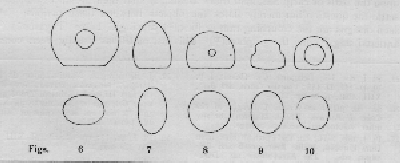
|
|||
| [ Previous ][Contents][ Next ] |
|||
|
the best. The portrait heads of the Seleucid period when cut by Hellenistic wasters are quickly discernable and bear a close resemblance to the coins.(22) Details of costume and headdress when compared with the coinage will sometimes settle the matter. This is especially true of Sasanian gems but the method can also be applied to those of the Seleucid and Arsacid periods. Our greatest difficulty arises when the workmanship and subject matter are oriental in technique and feeling, in which case long continuity of design and methods of engraving of which we have scant knowledge make identification difficult without mole positive evidence from excavations. Those seals which bear the kneeling or standing figure of a worshiper before an altar or other object of adoration might often better be classed as Neo-Babylonian or Achaemenian than Seleucid in view of their general conical shape and certain details of costume.(23) The scorpion was a favorite subject for Seleucid seals(24) and in increasingly conventional forms it continued in popularity in Parthian and even Sasanian times. With the advent of the Parthian period (247, in Mesopotamia c. 143 B.C., lasting until 226 A.D.) we have still less evidence than for Seleucid glyptic. Clay tablets with their impressions have nearly disappeared, completely so by the beginning of the Christian era, but another though not so adequate substitute appears in the allied art of the die engraver for coins, which can by then be very closely dated. While we must expect the engraver of dies to be far more conservative than the graver of seals, who would have to conform to the fashion of the hour, still there are some valuable points to be gained along this line. From this source of evidence we may be fairly sure that the greater part of the Greek influence bad died out by the beginning of the Christian era. On the other hand most of the common seals which have come down to us were made for men of meager means by native cutters who scarcely felt the Hellenization of the upper classes where Greek workmanship 
FIG. 1 | |||
|
|||
|
[ Previous ][Contents][ Next ] |
|||
|
Created by the Digital
Documentation Center at AUB
in collaboration with Al
Mashriq of Høgskolen i
Østfold, Norway. 980519 pas - Email: hseeden@aub.edu.lb |